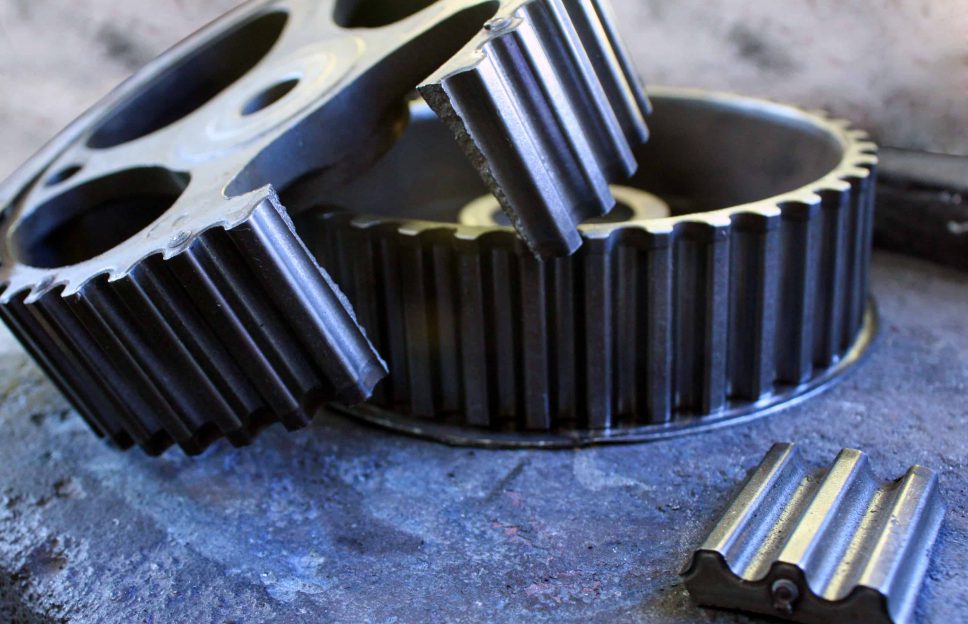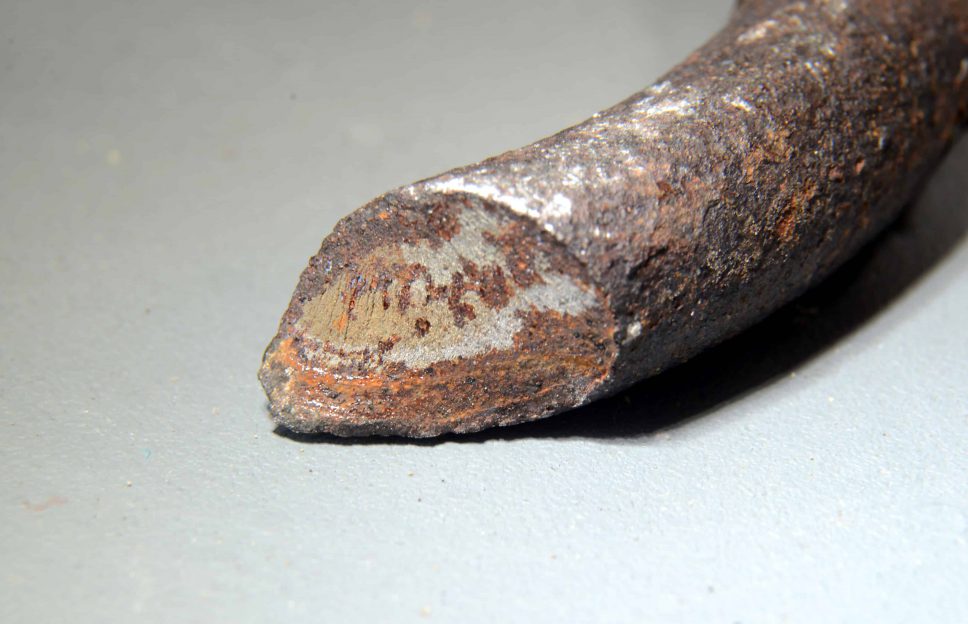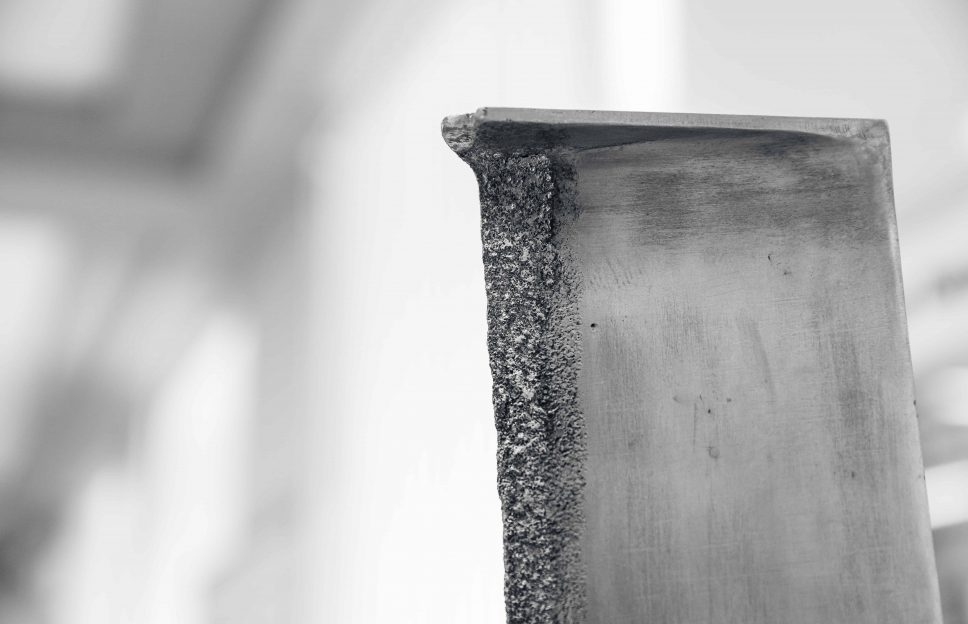Metal Failure Types
How Laser Peening Fights Metal Fatigue Failures
Experiencing Metal Failure? Let's TalkWhen material limitations undermine critical components, surface enhancements like laser peening provide enhanced protection against metal cracking and fatigue.
Metal failure results from a combination of mechanical and environmental factors
Applied stress, material flaws, and operating conditions all contribute to metal cracking and component degradation. It is the challenge of engineers to design robust components and efficient systems that meet operational demands for safety and performance.
- Metal Cracking
- Foreign Object Damage
- Fatigue Failure
- Corrosion
- Fretting
- Microstructural Porosity
- Erosion
- Cavitation
- Hydrogen Embrittlement
- Galling
- Stress Corrosion Cracking
FOREIGN OBJECT DAMAGE (FOD)
FOD is a term frequently used in the aircraft industry to describe damage occurring on components as a result of non-regular operating conditions. For instance, aircraft operating on a runway have the potential to ingest rocks and debris into the engine intake systems. Upon ingestion, the debris may damage the engine blades leading to dents, nicks, and partial fractures. These FOD induced defects can lead to poor performance, but more concerning, is unanticipated failure via fatigue cracking from stress concentrations. Processing via laser peening induces such deep residual stresses that FOD concerns can be reduced to negligible concern.
SENSITIZATION
Certain alloys commonly in use, especially 5xxx series aluminum, can develop sensitization, making them more vulnerable to stress corrosion and cracking. High temperatures can promote an electrochemical reaction in which alloy particles – e.g. magnesium or iron – migrate to the boundaries between grains of aluminum or stainless steel. This promotes separation of individual grains of metal, causing intergranular corrosion and cracking. Exposure to saltwater can further promote corrosion of sensitized metals. Laser peening does not treat sensitization itself, but it can impart compressive residual stresses in order to mitigate the resulting corrosion and cracking, even after some metals have experienced sensitization.
STRESS CORROSION CRACKING
Stress corrosion cracking (SCC) is a failure that occurs when three factors interact: a tensile stress, a susceptible material, and a corrosive environment. Similar to fatigue, these cracks frequently initiate at the surface at stress levels significantly below material capabilities. Because laser peening induces compressive residual stress at the surface of a part, the potential for SCC is drastically reduced and even eliminated.
CORROSION AND CORROSION FATIGUE
By inducing compressive residual stresses on the surface of metal components, the electrochemical potentials necessary for corrosion to occur are increased and current density decreases. By modifying the surface of components with laser peening, the risk of operating in a corrosive environment can be mitigated and even eliminated for many materials.
METAL FATIGUE FAILURE
Metal fatigue failure is when the surface of a metal experiences cyclic loading and begins to crack or fracture, causing the part to weaken. Laser peening specializes in achieving beneficial compressive residual stresses at a depth that is unmatched by conventional metal surface treatments. This is important because fatigue strength improvements are directly related to the magnitude of depth where compressive residual stresses appear.
EROSION
Erosion can occur on components due to a flowing media. This can be a result of wind, water, and compounds carried by these different media types. Hardening of the surface by laser peening helps to prevent material removal via erosion. This can be a significant cost savings for propellers, blades, and other components subjected to erosion concerns.
CAVITATION
Damage occurring on components operating at high speeds in fluid is often a result of cavitation. The cavitation occurs as high pressures between the fluid and component and results in the formation and collapse of a small air cavity; basically, a bubble. Modifying the surface of the component with laser peening increases the material strength locally at the surface and can aid in the resistance of the material to damage from the bubble collapse.
HYDROGEN EMBRITTLEMENT
Hydrogen embrittlement is a particularly concerning method of failure due to the random and unpredictable nature it presents. During certain processes and in certain environments, hydrogen atoms will migrate into a material structure. These hydrogen atoms can stay in the materials crystal structure or migrate to areas where they are able to combine and form. The hydrogen atoms, or molecules, can severely weaken the material leading to unexpected cracking and lower material strengths. Laser peened surfaces present a large compressive residual stress field that reduces the permeability of the component surface to hydrogen.
GALLING
Although not often a failure mode in itself, galling can cause significant problems in machinery and lead to other failure mechanisms. Galling occurs when adhesive forces on two metal surfaces work to tear fragments of the mating surfaces apart. Galling is frequently seen on stainless steel and titanium alloys, but can also be found on other base alloy systems including nickel and aluminum. Laser peening the surface of mating components helps increase the material resistance to galling by cold working the surface and inducing compressive residual stresses.
FRETTING
As metal surfaces slide against one another they frequently generate abrasive compounds. With continued relative motion, these abrasive compounds score the surface and give rise to even more wear, called fretting. As the fretting continues it can lead to corrosion, further wear, or fatigue cracking from fretting damage. By cold working the surface of metal components with laser peening, the residual stresses reduce the fretting mechanism of wear.
MICROSTRUCTURAL POROSITY
Additive manufacturing (AM) creates metallic parts by laying down fused layers of powdered metal alloys and fusing them together with a laser or electron beam, as in powder bed fusion (PBF). But PBF, like other additive manufacturing processes, results in microstructural voids or bubbles in the metal. This porosity has the potential to create mechanical weaknesses in the AM part, and materials scientists have found laser peening can compensate for porosity with compressive residual stresses.
Learn How Laser Peening Inhibits Metal Failure
No matter what metal failure type your component is experiencing, laser peening can improve the life of your metal part through deep compressive residual stresses. Laser peening can even be applied to fielding parts to extend their operational service life. Laser peening around existing cracks inhibits further propagation, and can return the fatigue tolerance of damaged parts to “like-new” condition.
Let’s talk about how laser peening can fight your metal failure.




